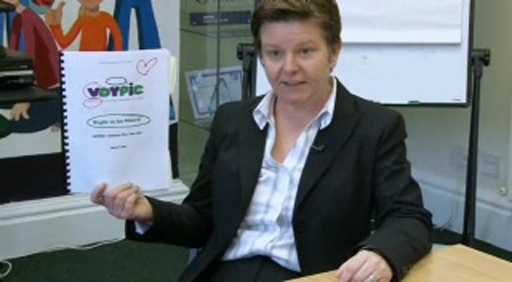1 How do you handle change?
Change comes in a variety of guises, and the way we approach and handle it differs from person to person. In Activity 1, you will hear two managers talking about their experiences of managing change, before moving on to explore your own approaches to change.
Activity 1
Start by watching these videos of managers in health and social care contexts. Anita Rogers was chair of the Ceredigion and Mid Wales NHS Trust, and is now a member of the ‘Save Aber’ community action group, campaigning to save local hospital services. Vivian McConvey is the chief executive of VOYPIC (Voice of Young People in Care), a voluntary organisation in Northern Ireland.
Vivian and Anita talk about their very different experiences of change. As you watch the videos, make some notes on the key pressures for change they mention, and the ways in which they handled them. What words do they use to describe change, and what emotions do they express in response to their role as managers of change? Were you surprised by anything they said?

Transcript: Video 1

Transcript: Video 2
Discussion
Vivian and Anita each describe very different change processes. Anita reflects on her experiences of trying to manage a large-scale organisational change, which she eventually came to oppose, while Vivian discusses the changes she experienced when she moved into a senior management position.
The experiences they describe highlight that managing change is both a professional and personal process. Anita describes feeling ‘haunted’ by a feeling of powerlessness she experienced in her professional role, and notes how she now feels much more of a sense of power as a member of the Save Aber group. Vivian reflects on her initial lack of confidence when she began her role as Chief Executive, and notes how she eventually came to see this as a positive thing as it meant she took a more considered and thoughtful approach to her management style.
Anita and Vivian’s experiences illustrate the often extremely lengthy process that change involves. Both stress the importance of bringing other people on board to help them in the change process. The video shows Vivian discussing upcoming changes with her colleagues, and the roles her staff will take during the change process. Anita talks about the importance of networking with other individuals and groups who have the power to support the Save Aber campaign.
Activity 2
Now complete the checklist, ‘How do you handle change?’ [Tip: hold Ctrl and click a link to open it in a new tab. (Hide tip)] using the range of options to record how strongly you agree or disagree with a statement. When you have finished, choose two statements that you strongly agree with and two that you strongly disagree with. Then, drawing on your own experiences, write down the reasons for your views.
Discussion
Anita and Vivian took very different approaches to managing change, but what their experiences highlight is the high level of emotion this involves. The change management checklist explored your own emotional reactions when faced with change. The statements you chose from the checklist will probably be closely linked to your own experiences. Reading through these statements, you may have been struck by how many related to the emotional impact of change and the importance of communication. Frustration, uncertainty and anxiety are just as likely to feature in people’s experience of change as feelings of excitement, optimism and commitment.
It is very easy for people to feel disempowered during a change process, and this is as relevant for people who use health and social care services as it is for practitioners. Of course, managers also experience heightened emotions during periods of change, but they are not necessarily permitted – by their own managers or by social conventions – to express these as freely as other colleagues. Managers need to take responsibility for their own feelings as well as supporting staff and services users through a change process, and that is why it is helpful as a manager to have an insight into your own approach to handling change.
In this section you explored personal approaches to change, and the emotions this can evoke. The next activity will help you to understand the pressures for change in health and social care contexts and will introduce some key ideas about change from organisational theory.
